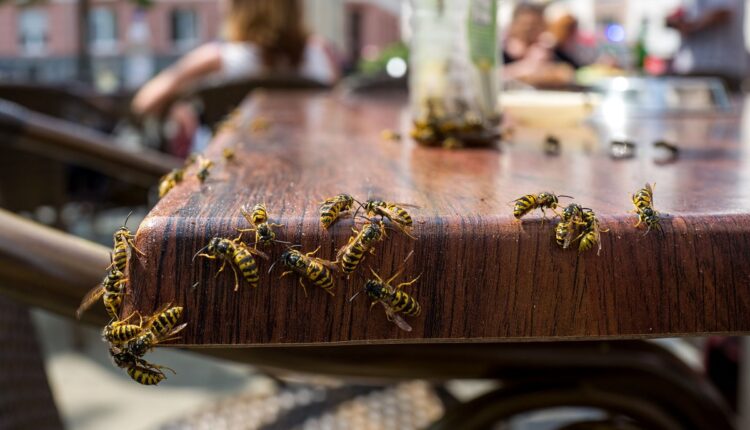Protecting Children from Stinging Insects in Altamonte Springs Yards
The warm weather and abundant yards in Altamonte Springs are perfect for outdoor play. But this environment also attracts stinging insects. Bees, wasps, and yellow jackets. These play an important role in nature, but they can also be a danger, especially to children.
Kids are curious and natural explorers. They might accidentally disturb a nest while playing near bushes, trees, or under a porch. A single sting can cause serious reactions in allergic children. A sting can be painful, frightening, and enough to make outdoor play less enjoyable, even without allergies. Thus, pest control in Altamonte Springs should include approaches against these insects. Below are steps to keep stinging insects away from children:
Know the Common Stingers
You should learn to spot common stinging insects to take action against them. In Central Florida, here are the types you may see:
- Wasps. These insects have long bodies and narrow waists. Paper wasps often build umbrella-shaped nests under eaves or patio roofs.
- Yellow Jackets. These aggressive insects build nests underground or in wall voids. They can sting multiple times and are easily disturbed.
- Hornets. Hornets build large nests in trees or shrubs. They are more aggressive when their nests are approached.
- Bees. Most bees are less aggressive than wasps, but they can still sting when threatened. Honeybees are important pollinators, but should be given space.
Inspect the Yard Regularly
Doing inspections around your yard can prevent surprise encounters. Walk through the yard before letting children run around the area or play in the garden. Look for nests in shrubs, trees, or near the ground.
Underground nests can be especially challenging to deal with. Yellow jackets often nest in old rodent holes or bare patches of soil. Keep children away from any flying insects you spot and call a professional to handle them. Avata Pest Control can immediately attend to your call. The Clermont-based company has been in the pest control industry since 2001, helping homeowners deal with pests and stinging insects.
Keep Food and Drinks Covered
Stinging insects are drawn to sugary drinks, snacks, and fruit, especially during summer. Keep your children’s food and drinks covered when they are spending time in outdoors. Avoid using cups that don’t have lids. Also, clean up spills right away. Trash cans should be tightly sealed and placed away from play areas. Open or overflowing garbage is an attraction for wasps and yellow jackets.
Dress Children in Light Colors
Bright colors and floral patterns can attract bees and wasps. These insects often mistake these colors for flowers. Dark colors, on the other hand, can make insects feel threatened. Dressing your children in light and solid-colored clothing when playing outdoors can help repel these insects. Avoid using strongly scented lotions, perfumes, or hair products, as these scents can also attract stingers.
Teach Children What to Do Around Insects
Children should be taught not to swat at bees or wasps. Quick movements can make these insects feel threatened and sting. Instead, show them how to stay calm and slowly walk away if a stinging insect gets too close.
You can also help them learn where insects hang out. Teach them to be careful around flower beds, bushes, and trees. Encourage them to tell an adult right away if they see a nest or hear a buzzing sound near a structure or in the ground.
Seal and Repair Outdoor Structures
Wasps and hornets build nests under deck railings, behind shutters, or inside gaps in siding. Check for openings around outdoor sheds, fences, and patios. Seal cracks and repair broken panels or boards to keep insects from moving in. Also, remove unused items from the yard that insects can use as shelter.


Comments are closed.